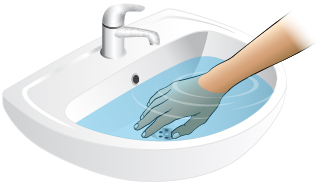Photos

FIRST AID Advice - Frostbite
Rewarm the frostbitten area quickly with wet heat.
- Move into a warm room.
- For frostbite of fingers and toes: place the frostbitten part in very warm water. A bathtub or sink is often the fastest approach. The water should be very warm (104 to 108° F, or 40 to 42° C), but not hot enough to burn. Keep soaking in this warm water for about 30 minutes. A pink flush means circulation has returned to the body part.
- For frostbite of the face (such as ears, nose): apply warm wet washcloths to frostbitten area of the face. Keep doing this until the frostbitten area turns to a pink flush. This signals the return of circulation to the frostbitten area (usually 30 minutes).
Special Notes:
- Do not rewarm a frostbitten area if there is a chance of it refreezing.
Source: Self Care Decisions, LLC
Used with Permission from Schmitt Pediatric Guidelines LLC.